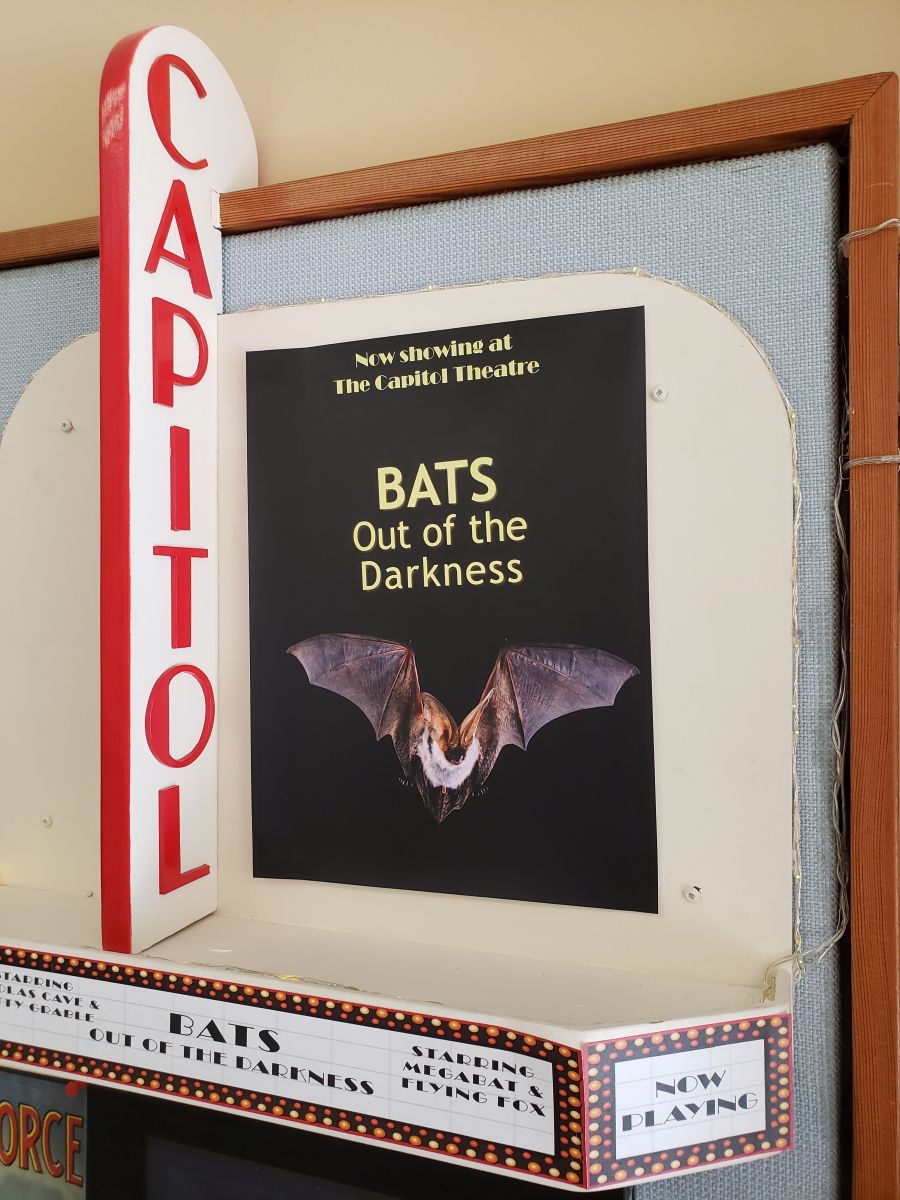“Do you want me dressed up as a bat?” asked Chandra Wong. “I have a bat costume.”
Wong happens to be the museum assistant at the Penticton Museum and Archives.
Considering the museum’s current exhibit is entitled ‘Bats, Out of the Darkness’, I figured my first question was to ask Wong if she is a “bat” person?

“Bats are really interesting first off. Everybody loves bats,” she replied. “I’m a biologist by trade, so I knew a lot about bats. And we have a lot of bats in the Okanagan.”
The exhibit consists of boards filled with photos and information. You can examine bat specimens, hear their calls, and join a virtual bat count.
“Bats have as good of eyesight as we do. And they also have echolocation, which helps them see through sound,” said Wong. “What has amazed me here in the Okanagan about bats is, I was just sitting along the lake one day, underneath a bit of a porch, and there was laundry on the line, and this bat just flew in and around the poles. It was flying around, and it didn’t hit anything. They’re able to move so fast.”
It might not be a stretch to say people know more about bats through Batman comics, television shows and movies than those little black creatures we see nesting in caves around the Okanagan.
But devour the following:
Fact #1: BC is home to 15 of Canada's 18 bat species, with 14 of those species in the Okanagan.

“The challenge for these bats is, it can be hard to make a living. There’s habitat loss because they roost for the daytime,” explained Wong. “They need to have a water source, and some of the lakes and ponds and rivers are being developed. There are cats that can hear the echo location so they can hunt the bats.”
It’s due to many of those concerns that some species of bats are endangered.
“We can help bats. That’s the main focus of the exhibit here,” stressed Wong. “Keep your cats inside. Build a bat-friendly garden so that you get night-flying insects coming in.
“The white nose syndrome, habitat disturbance, and habitat loss - those are real challenges for bats.”
White nose syndrome is a fungus that starts to grow on bats’ fur during hibernation, causing them to wake up and clean themselves off.
“They don’t have enough reserves to keep waking up during the hibernation season to make it through the winter,” explained Wong. “So we have had colonies in Canada of Little Brown Bats that have been devastated, and we wanted as a team to raise awareness.
“We haven’t seen any white nose syndrome in BC but we're very concerned about it.”

Fact #2: A single Little Brown Bat can eat over 600 mosquitoes in an hour.
“When you have a healthy bat population, they keep insect numbers in check,” said Penticton Museum & Archives Curator Dennis Oomen. “Researchers even estimate if you live in an area which has a healthy bat population, farmers and orchardists can save a lot of money on pesticides, simply because bats take care of so many insects.”
Fact #3: Bats make up nearly 20% of all mammal species around the world.

“A lot of people get worried if they see bats going into their building. They think of them as mice. They’re not rodents rodents at all,” explained Wong. “They’re in a group of their own called Chiroptera. They are the only known mammal that can fly.
“And the amazing thing is, if you take a look at their wings, the bones are made up of what we have as fingers.”

One of the common misconceptions is that bat bats carry rabies. According to Wong, only about half a percent of bats carry rabies.
“You’re not going to get any sickness from a wild animal if you give it the space it needs.”

The bat exhibit is on until the first week of March.
It’s sure to be a learning experience.
“One thing that’s really fascinating about these animals is, they fly at night, and they navigate and find their prey by a form of radar. They make these clicking sounds, called echolocation, and they’re able to judge how the sound reacts and how it bounces back to them, exactly where things are,” explained Oomen. “When you think of the size of the bat, and the very complex mechanism that allows them to do that, it’s really amazing to think about.
“Like most people I didn’t have a great affinity for bats. But I certainly appreciate them more now.”
The Museum has two bat edu-kits they will loan out for a small administrative fee.
It’s essentially a hockey bag filled with information, and of course, the bat costume!
You can find out more information about bats in general by clicking here.
















